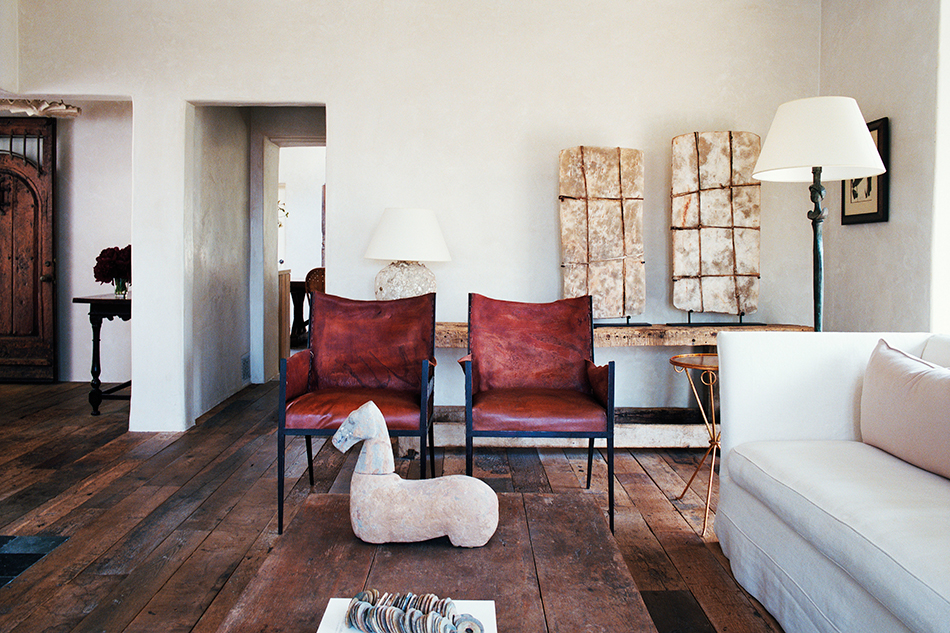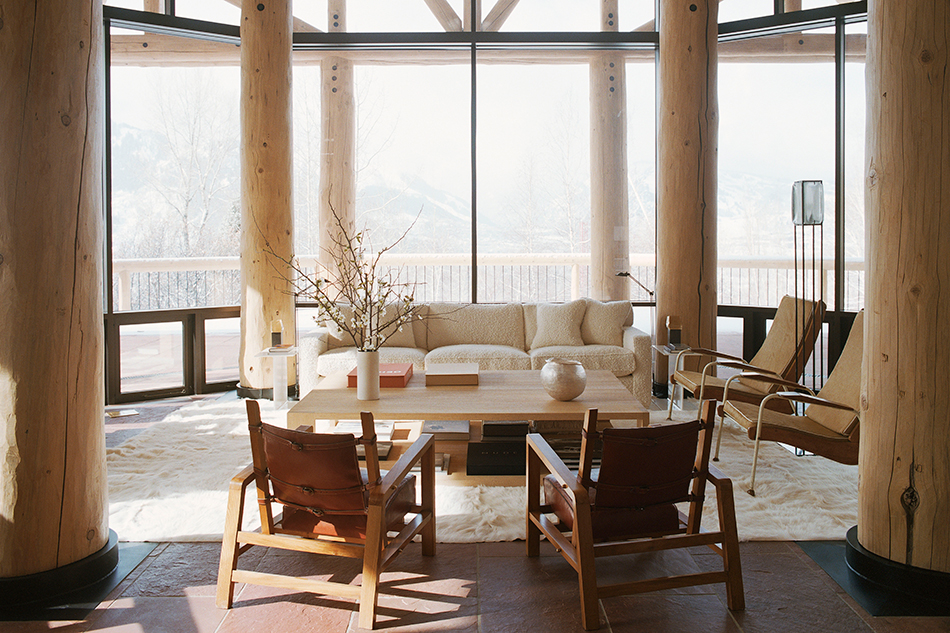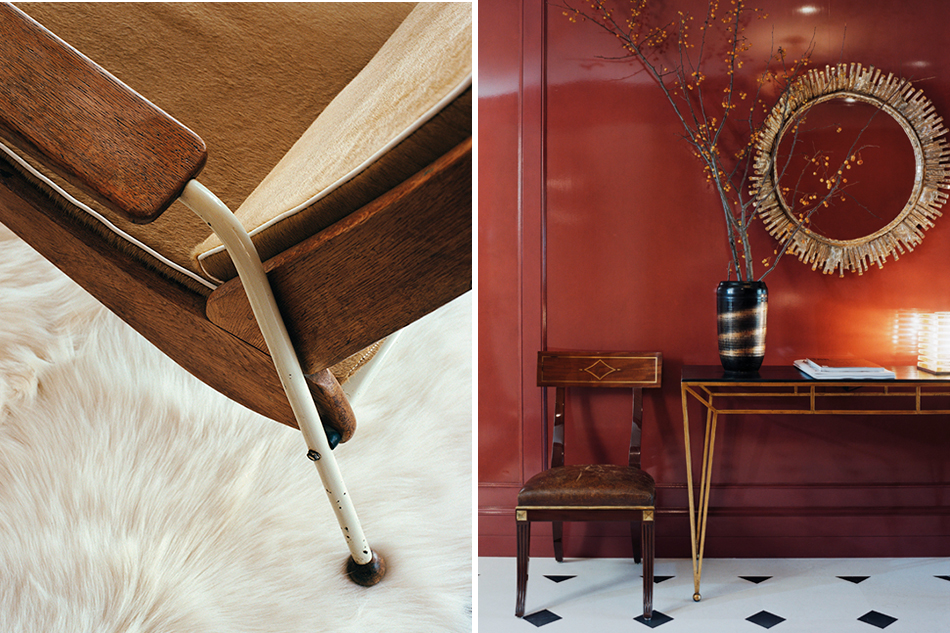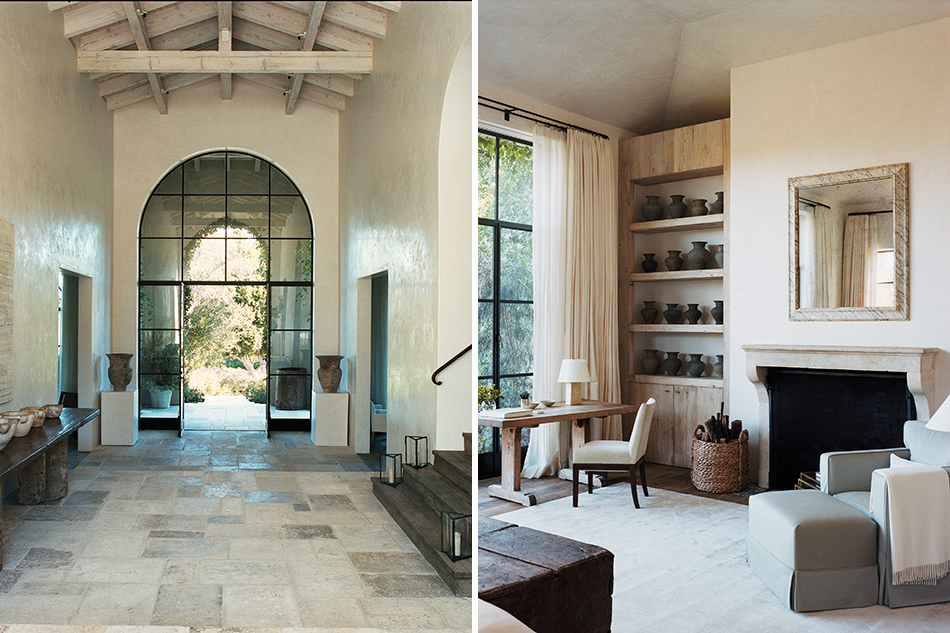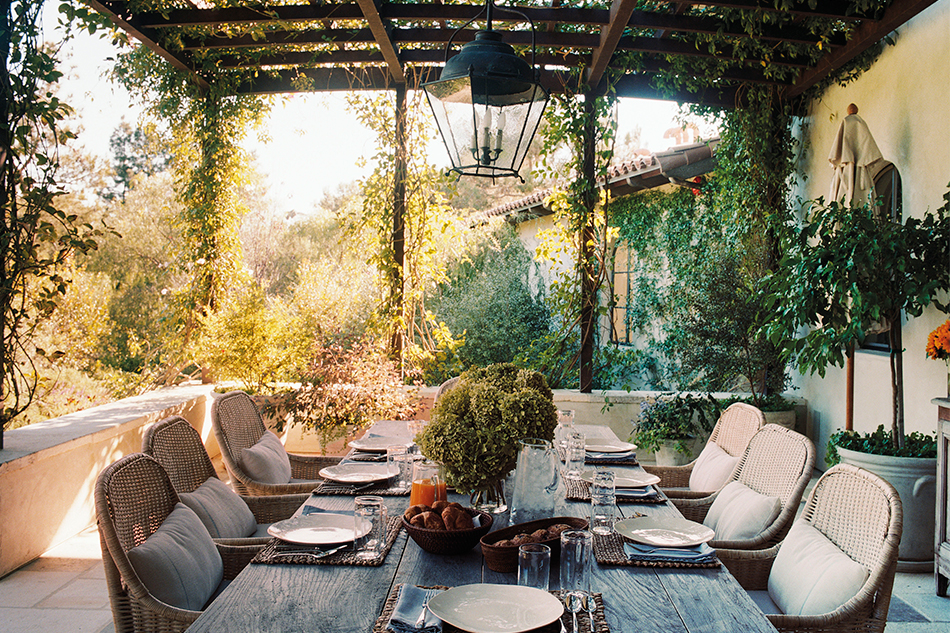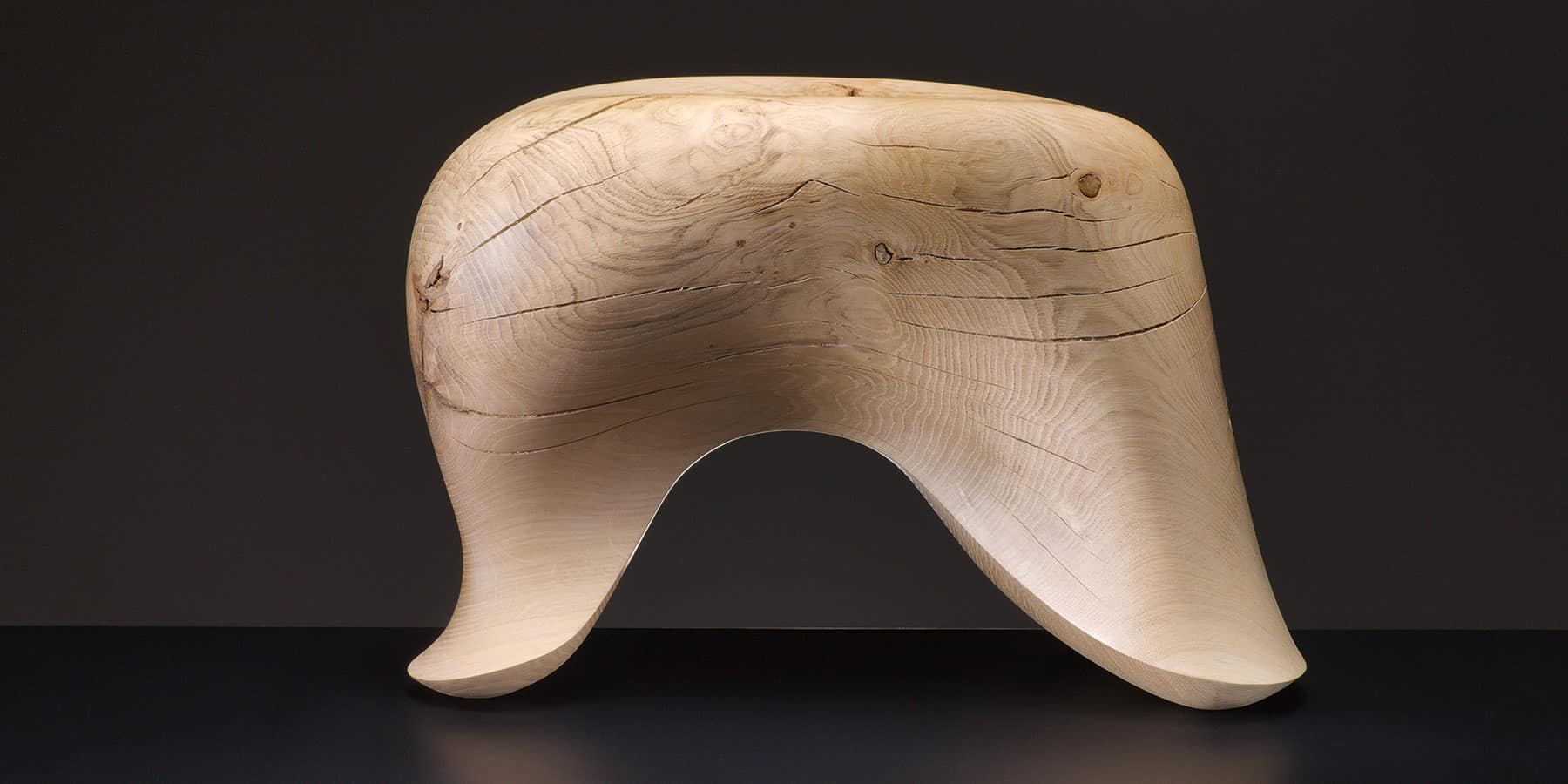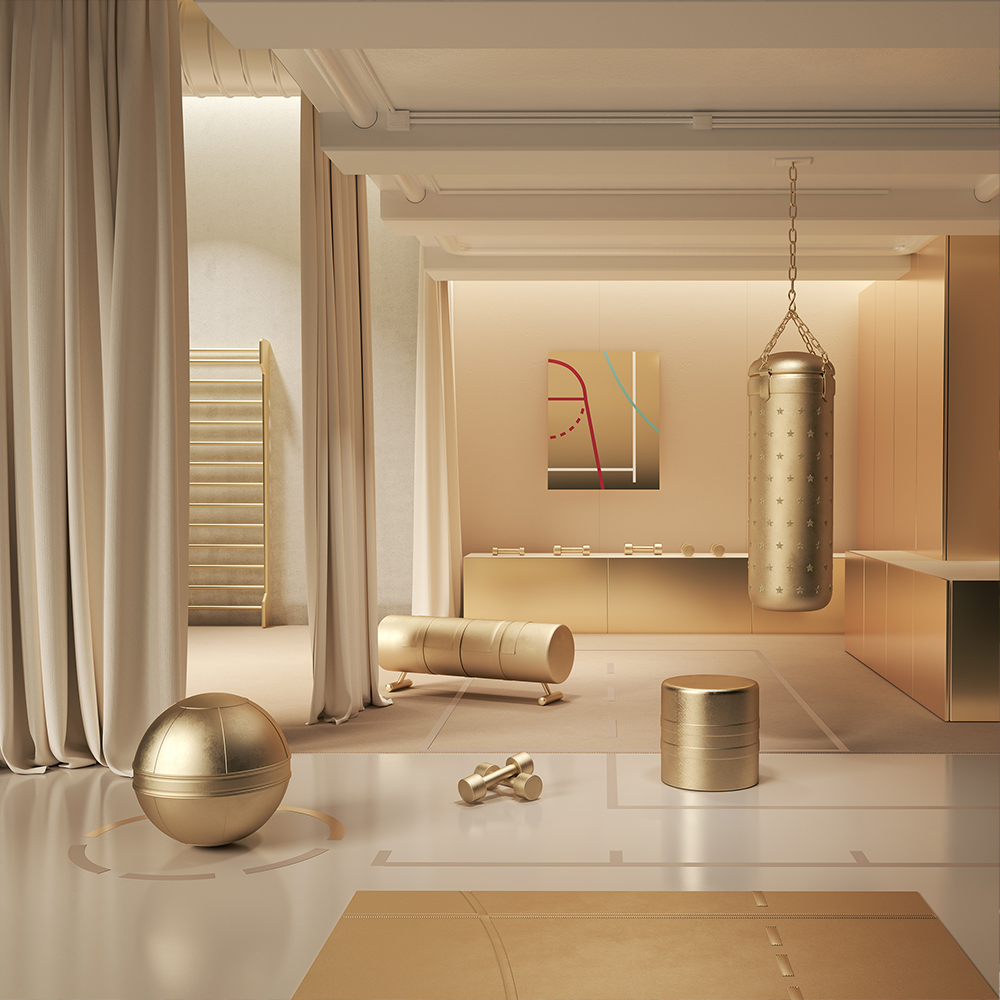
November 14, 2012A new monograph from the Los Angeles designers Alexandra and Michael Misczynski — the couple behind Atelier AM — takes readers inside five of the duo’s serene and carefully curated projects. Top: In the Central Park West project, furnishings include Louis XVI armchairs, coffee and side tables by Marc Du Plantier, a sofa upholstered in silk velvet and Tang Dynasty vases mounted as lamps. All images © François Halard
It should come as no surprise to anyone who knows the work of Michael and Alexandra Misczynski, the husband-and-wife team behind the Los Angeles-based design firm Atelier AM, that the first book to be published on their work is itself a beautiful object.
With its elegant gray-linen cover, Interiors Atelier AM (Rizzoli) could easily grace a table or bookshelf in the understated luxury of a Misczynski interior, set among carefully curated furnishings, both antique and modern. “Touch is as important to our work as how something looks,” says Michael, explaining the impetus behind the tactile cover and thick matte paper, “which has a bit of heft when you turn the page.”
With images by the acclaimed photographer François Halard, Interiors Atelier AM takes the reader on an intimate visual journey into five of the Misczynskis’s residential projects. “We edited it down — like we do in our work — trying to hit a few notes rather than a bunch,” Michael explains.
“There is a rare integrity in everything they do,” says Halard, who closely collaborated with the Misczynskis on the book for more than a year. “The love and care they put into every aspect of their work, from the scale of the architecture to the smallest design detail, is exceptional.”
Referencing both European and American sensibilities, the talented design partners are known for their elegantly refined interiors and for successfully mixing the rarefied and the rough-hewn in both materials and objects. As Mayer Rus, the West Coast editor of Architectural Digest, writes in the book’s main essay: “The rooms they devise are layered with weathered wooden floors and panelling, old masonry, hand-troweled plaster, cracked leather and flaked mirrors — all set confidently alongside glass, steel and other essentials of the modernist vocabulary.”

The Las Vegas residence, shown here, is one of the projects included in the book.
A mastery of restrained compositions and a subtle palette of muted tones are other hallmarks of the Misczynski look. Diverse furnishings such as 17th- and 18th-century European tables and chairs, 4,000-year-old Bactrian sculptures and modernist masterworks by Giacometti, Frank, Chareau and du Plantier blend seamlessly in rooms of elegant scale and proportion.
In the 10 years since they established their firm, their unique decorative approach has garnered such high-profile clients as actor Tom Cruise, art collectors and philanthropists Edythe and Eli Broad and former Disney CEO Michael Eisner and his wife, Jane.
Alexandra and Michael’s paths first crossed when they were working on two different Manhattan apartments for the same client. “Alex had never met the client in person, and when she walked into the room she assumed I was he,” says Michael, describing their amusing first encounter. “There was definitely an immediate spark.”
Alexandra, an elegant East Coast blonde, grew up in Manhattan and Bedford, New York, where her mother was a decorator working in a very traditional English style. An art history major in college, she flirted with fashion before realizing that interior design was her true calling. She worked for the late New York-based decorator Naomi Leff, who was known for her restrained classicism and whose many A-List clients included Barry Diller, David Geffen and Steven Spielberg.
“She was an amazing woman and a great teacher,” Alexandra says. “She would shoo me out the door in the evenings, encouraging me to take classes at Parsons to learn things I didn’t know how to do. I started out working in the sample library and left as a designer.”

The designers’ eclectic eye can be seen in their own L.A. home, where they’ve combined an 18th-century French walnut table, a 17th-century Italian walnut cupboard and a collection of Bactrian alabaster chalices and dishes that date back to the second millennium BC.
A Los Angeles native, Michael studied architecture at USC, but it was a class at UCLA, taught by legendary decorator Rose Tarlow, that stirred his interest in interior design. Tarlow, clearly sensing a nascent talent, took the energetic young man under her wing, eventually helping him find a job with architect Richard Meier, where he assisted on projects including the Getty Museum and the Ara Pacis Museum in Rome.
When Michael met Alexandra, he was working in Meier’s New York office; several months later, he was offered a position in L.A. working on an animation and 3-D project for DreamWorks. Alexandra soon followed, finding work with the distinguished decorator Michael Smith, a master of the traditionally tailored interior.
“Rose pushed us to start and supported us to make it happen,” says Michael. “We have always referred to her as our fairy godmother. We also admire her decorating business model — only a handful of clients at a time. I don’t know many firms who do that on purpose. We maintain the same philosophy — our clients know they are always getting us.” Married in 2000, the Misczynskis established Atelier AM in 2002. (Their sons, Miles and Henry, followed in 2005 and 2008.) “I like to be involved in the architecture and building materials process,” explains Michael. “We tend to share the furniture, but the fabrics are all Alex.”
“We still vet each other’s work, though,” Alexandra adds. “But usually we see eye-to-eye and that’s what makes it work.”

In the Las Vegas residence, a leather-and-walnut 17th-century Italian settee faces diaphanous white curtains in the south gallery leading to the master suite.
Current projects are as diverse as a Reginald Davis Johnson house in Montecito and a pied-à-terre at the Pierre hotel in New York City. “The clients are a young couple,” says Michael of the Manhattan project. “The panelling is by Feau & Cie in Paris, but the furniture is mostly mid-century Italian — Ponti, Scarpa. We want it to be eclectic, playful and fun.” For a duplex penthouse on Michigan Avenue in Chicago, “We are going super-duper Art Deco,” he says, describing paneling in Makassar wood and furniture by “Ruhlman, Frank and all the heavies of the period.”
A fitting example of the fusion of the Misczynskis’s talents is their modern version of a log cabin in Aspen, Colorado, one of the projects in Interiors Atelier AM. The use of raw spruce logs and waxed steel walls for the interior structure is balanced by “warm materials to ease the edges,” says Michael, “so everything isn’t so linear and sharp.”
Wood floors — their natural imperfections preserved — add an organic and soothing element, and vintage French modernist furniture lends unexpected sophistication. The sensual textures of Loro Piana cashmere on the walls, a goatskin rug and hand-loomed mohair and cashmere bouclé fabric on sofas create a feeling of luxe coziness.
A Las Vegas house, a collaboration with the Los Angeles-based architect William Hablinski that’s also featured in the book, is a “confluence of old and new elements, ranging from 16th-century Palladian villas in the Veneto and more rustic 15th-century Italian farmhouses to the kinds of treatments typical of villa renovations in the mid-20th century,” explains Hablinski.
For the interior design, the Misczynskis “understood that beyond scale and proportion, dialing it down to the smallest architectural detail was really important,” says Michael. One such example is the intricate floorboard patterns based on archetypes from the Villa Medici in Rome. “Just getting the transition of patterns right from threshold to threshold took precision to the last centimeter,” he says.

Alexandra, Michael and their two boys, Miles and Henry, were captured by the pool of their Hollywood Hills home for the October 2009 cover story in Town & Country. Photo by Matthew Hranek
To conjure a feeling of age and authenticity, they used reclaimed and weather-worn materials, and they maintained a sense of formality and luxury with their selection of rich tapestries, brocades and embroideries. “We love pattern and embroidery,” says Alexandra. “But pattern-on-pattern is not our aesthetic. If you’ve got too much going on, you don’t know where to look.”
The Misczynskis say they chose to include their own home in their book to “add a personal touch” and show how informality can happily coexist with rare and wonderful pieces,” says Michael. In their 1920s Mediterranean-style villa in the Hollywood Hills, they coated raw plaster walls with wax to create a creamy thickness, and they covered floors with reclaimed wood and antique stone. “We appreciate that in older things, regardless of what they are, they feel like they are breathing and have soul,” he adds.
Recherché 20th-century pieces, such as chairs by Jean-Michel Frank and a table lamp by Alberto and Diego Giacometti, sit alongside elegant yet functional sofas slip-covered in Connemara linens. The patina of an 18th-century refectory table in the kitchen “only gets better,” says Alexandra, with the bumps and scraps of family activities and meals.
“Ultimately, they are acutely aware of the human aspect of their work,” concludes Mayer Rus in Interiors Atelier AM, “and the homes they create, first and foremost, remain a reflection of the unique spirit of their inhabitants.”
PURCHASE THIS BOOK
or support your local bookstore

